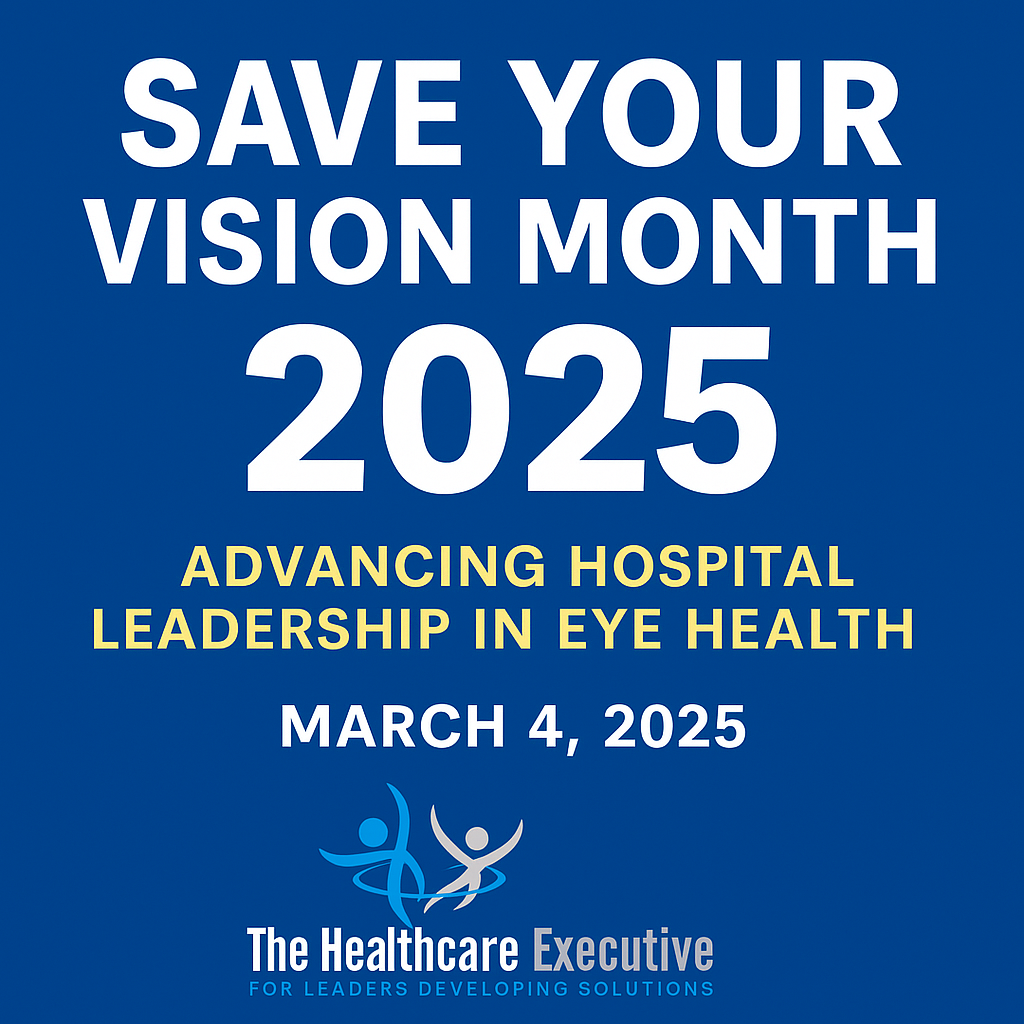Save Your Vision Month 2025: Advancing Hospital Leadership in Eye Health

- Posted by Greg Wahlstrom, MBA, HCM
- Posted in Health Observance Calendar
Executives Must Strengthen Vision Care Strategy, Infrastructure, and Equity Across Health Systems
Published: March 4, 2025
Save Your Vision Month, recognized each March, is a timely reminder that vision health deserves a seat at the strategic table in every health system. According to the Prevent Blindness Foundation, more than 160 million Americans experience vision problems, with half remaining undiagnosed or untreated. For hospital executives, the imperative is clear: elevate eye health from episodic specialty care to a core pillar of chronic disease prevention and quality of life. At Wills Eye Hospital in Philadelphia, system integration includes real-time screening, tele-ophthalmology, and embedded optometry services within primary care. This integrated model shows how forward-thinking executives can create scalable, proactive, and accessible pathways to protect vision at every stage of life.
Hospital leaders must also rethink the infrastructure required to support effective eye care delivery. Many hospital systems underfund ophthalmology departments, limit outpatient surgical capacity, or lack strategic vision screening programs. At Mass Eye and Ear, leaders have developed a multi-site surgical network to reduce wait times for cataract, glaucoma, and retina procedures while integrating research and education into operations. Investment in modern imaging, staff training, and AI-supported diagnostics must be prioritized. Executive teams should evaluate their outpatient capacity, cross-specialty collaboration, and technology roadmap to ensure eye care services are optimized for both patient outcomes and financial sustainability.
Vision health disparities remain stark, particularly for children, older adults, rural communities, and individuals of color. According to the National Eye Institute, Black and Hispanic Americans are more likely to experience blindness and diabetic retinopathy and less likely to receive annual eye exams. Hospital executives must adopt equity-informed strategies to bridge these gaps. At Bascom Palmer Eye Institute, mobile outreach programs and multilingual services have been scaled systemwide, ensuring broader access to vision care. Equity audits, zip code-based outreach, transportation support, and insurance navigation should be standard elements of an executive-led eye health strategy.
Digital innovation is reshaping vision care at a rapid pace. At Duke Eye Center, virtual screenings and AI-assisted retinal scans are used to detect early signs of macular degeneration and diabetic eye disease in high-risk populations. Hospital executives should incorporate these tools into primary care workflows, emergency department protocols, and post-acute monitoring. Partnering with tech vendors, standardizing data capture, and integrating vision health into electronic health records (EHRs) is no longer optional—it’s essential. Vision loss can often be prevented with early detection, but only if leadership champions the tools that make proactive care possible.
Save Your Vision Month 2025 is a call to action for hospital executives to lead beyond awareness. Strategic investments in eye health will enhance population health metrics, reduce long-term care costs, and position hospital systems as national models of integrated vision care. Leadership must move beyond reactive treatment and toward preventive, digitally enabled, and equity-centered eye health strategies. The future of vision care depends not just on ophthalmologists—but on those who lead them. Now is the time to see clearly and lead boldly.
Discover More on Eye Health Strategy and System Integration
Explore how your hospital can align digital innovation, preventive care, and equity strategy in vision health services in our related executive guide.
Internal Links
- AI in the C-Suite: Redefining Decision-Making for Healthcare Executives
- The 2025 Regulatory Roadmap: What CEOs Must Prepare For Now



